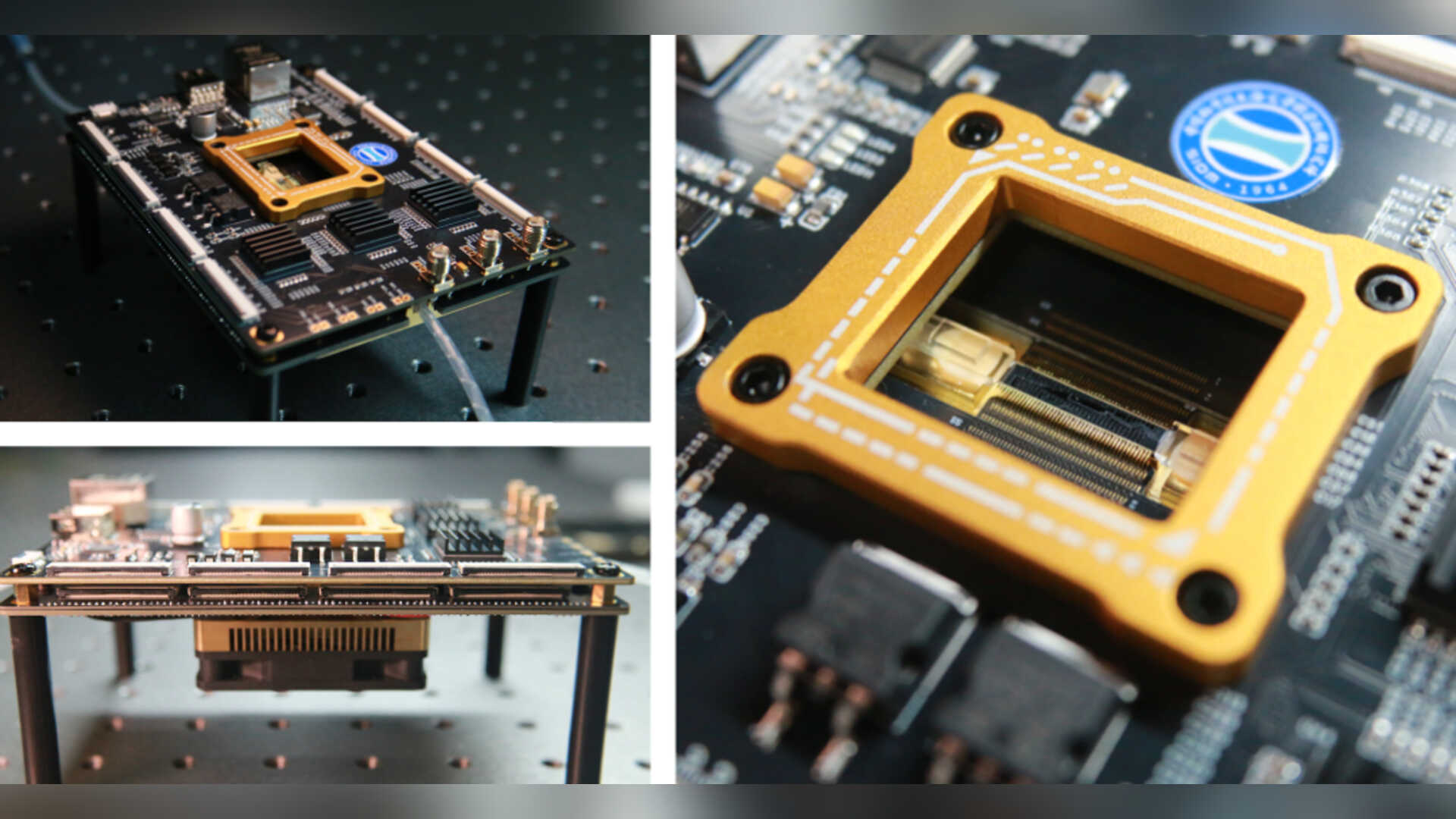

An illustration of the ultra-high parallel optical computing chip. /Shanghai Institute of Optics and Fine Mechanics
Chinese scientists have developed the world's first ultra-high parallel optical computing integrated chip that's capable of delivering a theoretical peak computing power of 2560 TOPS (Tera Operations Per Second) at a 50 GHz optical clock speed, a metric that reportedly benchmarks against NVIDIA's advanced GPU chips.
The achievement comes from researchers at the Shanghai Institute of Optics and Fine Mechanics (SIOM) under the Chinese Academy of Sciences.
The researchers have proposed a new ultra-high parallel photonic computing architecture and independently developed an optical computing chip featuring large bandwidth (over 40 nm), low loss and reconfigurable properties, thus enhancing the chip's computing power.
A key innovation lies in the use of soliton microcomb sources, which provide over 100 wavelength channels.
"We've achieved information interaction and computation with over 100-wavelength multiplexing on an optical chip, demonstrating high-density on-chip information parallel processing," said Xie Peng, a researcher at SIOM.
Unlike traditional optical computing that uses a single wavelength, this ultra-parallel approach leverages over 100 separate light wavelengths to process data streams simultaneously – boosting computing power by up to 100 times without increasing chip size or frequency, according to the study.
"It's like transforming a single-lane highway into a super highway capable of handling a hundred vehicles in parallel, greatly increasing throughput per unit time without changing the chip hardware," said Han Xilin, an engineer at SIOM.
Optical computing, with its natural advantages of high frequency, high parallelism and large bandwidth, offers significant potential for enhancing computing density and power through increased parallelism. This parallel optical computing architecture holds broad application prospects in fields like artificial intelligence and data centers.
In particular, it promises efficient solutions for embodied intelligence, neural networks, physical simulations and image processing. Furthermore, the low-latency characteristics of photonic computing make it ideal for edge devices with small data volumes but high latency requirements, such as communication exchange networks and drone swarms.
The team's findings were published on Tuesday as a cover paper in the journal eLight, titled "Parallel Optical Computing Capable of 100-Wavelength Multiplexing." (CGTN)

86-10-68597521 (day)
86-10-68597289 (night)

52 Sanlihe Rd., Xicheng District,
Beijing, China (100864)

